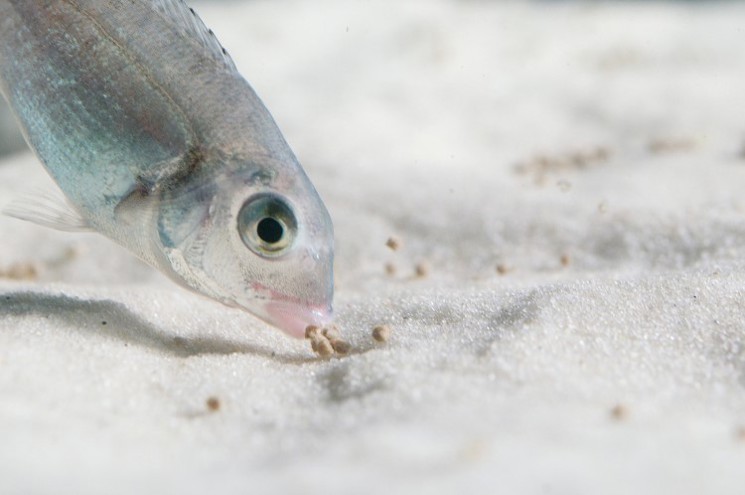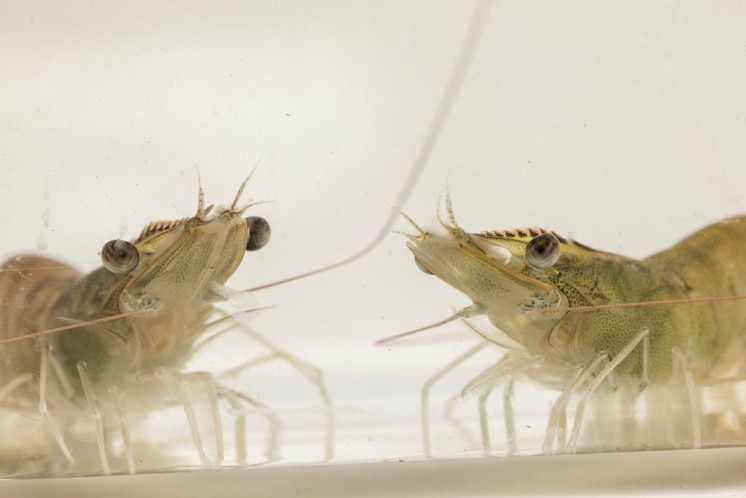Is one feed sufficient for all aquaculture species?
No. Fish and shrimp, like humans, depend on a balanced diet to stay healthy and have different nutritional needs throughout their life cycle. Skretting produces feeds that support fish and shrimp throughout all life cycle and production needs.
Skretting feeds are formulated for
- species
- lifecycle (e.g. smolt or grower) diet preference (e.g. carnivorous, herbivorous)
- environment (e.g. saltwater, freshwater, tropical, temperate)
- type of farm (e.g. sea pens, ponds, land-based recirculation facilities)
Continuous R&D is essential to develop a comprehensive understanding of the needs throughout the life cycle of different species. For example a juvenile, carnivorous Atlantic salmon being raised in a freshwater, land-based hatchery until it reaches 200g in size requires a high protein feed to meet its rapid growth requirements, while a harvest size Atlantic salmon (4-5kg) raised in a sea pen requires a feed with less protein and more fat compared to a juvenile. This is because an adult salmon doesn’t require as much protein for growth, but is able to use more energy from fat in its diet.
Frequent questions on feed management
Is one feed sufficient for all aquaculture species?
No. Fish and shrimp, like humans, depend on a balanced diet to stay healthy and have different nutritional needs throughout their life cycle. Skretting produces feeds that support fish and shrimp throughout all life cycle and production needs.
How much feed is needed to grow a farmed fish?
Fish and shrimp are extremely efficient in converting feed into high-quality protein. On average, farmed fish require 1.1 kg of feed to gain 1 kg of body mass, compared with 1.7 kg for poultry and 6.6 kg for cattle.
Can efficient feed management help improve the sustainability of aquaculture?
Yes. Thanks to modern systems designed to support decision making relating to the diet of the fish or shrimp, farmers are able to optimise the amount of feed used, thereby improving efficiency while reducing waste and environmental impacts.

